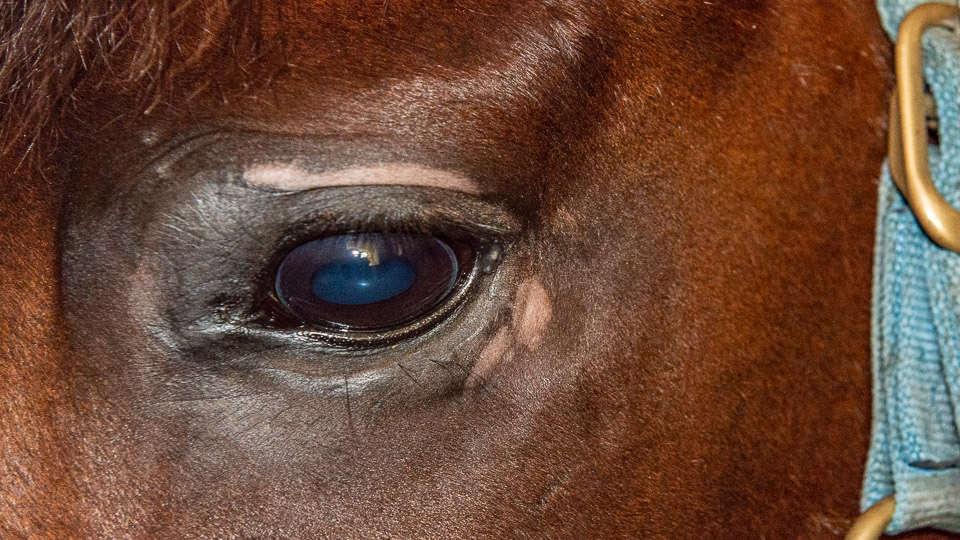
Horse Skin And Hair – An Introduction
The purposes of skin and hair are many and equally important. They keep everything inside in and everything outside out. It grows hair and adds fat to keep us warm and it sweats to keep us cool. It senses movement and helps to feel the blades of grass that are succulent. It shakes off flies and screams for attention when it is damaged. It remains flexible around joints but firm over muscles and the face.
Skin is cleaver in that it can take care of itself. When cut it heals through an amazing and precise process. But when humans and other factors mess with this process healing becomes troubled in a process almost unique to horses. It also can become allergic to fly bites and a bed of food and a breeding site for flies when damaged. Viruses can affect the integrity of skin and may be the cause of several skin neoplasia types (equine sarcoid, aural plaques, warts). Cancer can strike which can be troublesome (melanoma) or life threatening (squamous cell carcinoma). It can react with foods that cause sensitivity to light (photosensitization). It can itch to the point of damage. It can also be rubbed to ecstasy (mutual grooming) or torn from fighting or self inflicted wounding (self mutilation).
The skin is normally covered with good bacteria and excreted oils that keep the skin healthy. Daily washing with soaps and detergents removes these protective features. And why wash a horse when they go right out and roll in the dirt? Soaps should be limited and cleaning done with only water and a scrubber. I personally have not used soap on my body and hair for years and no one has complained of any body odor and my skin is very healthy. There is a lot of research on this in humans but again, none in horses.
There are a lot of topics with images here because the skin and hair are visible. I’ll give brief explanations for each but I have found 2 things that seem to help a poor hair coat and skin. The first is to feed protein filled with all the essential amino acids. I have seen improved hair coats in as little as two weeks with the addition of all the amino acids. The second is eliminating all grain, grain byproducts and sugar treats from the diet. More on this under nutrition. You may find that daily baths with soap are no longer needed to keep the horse shining. Saving money AND time is a treat for most horse owners.
Horse Skin And Hair – Abnormal Skin Features
This topic covers anything that isn’t considered normal on the skin of the horse and is not categorized into another topic.
Horse Skin And Hair – Depigmentation (Leukotrichia)
The cause for the horse’s skin to lose color in patches of hair in one spot or throughout its body is not common and is still without explanation.
Horse Skin And Hair – Dermatitis
Dermatitis In Horses
Horse Skin And Hair – Fascial Tears
Fascial Tears In Horses
Horse Skin And Hair – Partial Skin Thickness Wounds
Surgery topics are items that help the horse owner understand the fundamentals behind wounds and surgical lesions in horses. This particular topic needs some information and the images updated. I am aiming for the end of September. Thank you for your patience.
Horse Skin And Hair – Pressure Sores
When body weight is applied to the skin area for a prolonged period of time, the skin actually dies from the pressure placed upon it creating pressure sores.
Horse Skin And Hair – Proud Flesh
This is a replay of a HorseTalk™ webcast. Be sure to enroll in the next one and join Doc T live.
Horse Skin And Hair – Puncture Wounds
Puncture wounds can be invisible and inoculate the area with bacteria. If left untreated the infection can kill your horse. A tetanus vaccination is essential for puncture wounds.
Horse Skin And Hair – Shoe Boils
Shoe Boils In Horses
Horse Skin And Hair – Skin Abscesses
The purpose of an abscess is to move a foreign material that is inside the body to the outside. When this occurs, it is said to be draining and is a natural and end-stage process.
Horse Skin And Hair – Skin Lumps
In vet school I learned that a lump is a lump until proven otherwise. Only a biopsy can determine or confirm a diagnosis.
Horse Skin And Hair – Skin Reactions To Veterinary Treatment
Some horses will react adversely to medications showing a disruption from the normal skin condition. These include bumps, depigmentation, and temporary inflammation.
Horse Skin And Hair – Skin Scars
Scars occur during healing of full thickness skin wounds including surgery. They can range from unseen but felt to hairless, depigmented masses.
Horse Skin And Hair – Tack Injury
Skin rubs occur either acutely from trauma or insidiously through wear against objects such as tack, blankets, or the environment.
Horse Skin And Hair – Tail Rubbing
Tail rubbing is common in stabled and non-stabled horses and the cause is simple as well as the solution. The frayed hairs at the tail head is evidence although most horses uncontrollably itch their rear ends in front of you.
Horse Skin And Hair – Trauma Wounds
Traumatic wounds are different from surgical wounds for one major reason. The underlying trauma to the soft tissue complicates healing that is beyond the wound created by a sharp scalpel guided carefully by a surgeon’s hand.
Horse Skin And Hair – Unknown Skin Lesions
Most skin diseases in horses are ignored and random treatments are applied or the lesion is ignored. Here are a few of these.
Horse Skin And Hair – Wire Wounds
Wire wounds are difficult because of the underlying soft tissue damage that wants to slough off before the wound can close.
Horse Skin And Hair – Warts
Warts are virus caused growths on the skin usually on young horses and usually on the lips and muzzle.
Horse Skin And Hair – Pythiosis
This severe disease is often confused with habronemiasis which is also commonly called summer sores. This is a fungus based, highly invasive cancer that can affect a horse anywhere on its body.
Horse Neoplastic Diseases – Squamous Cell Of The Skin
This common cancer is locally invasive on pink skin such as the eyes, penis, and in the skull of the horse.
Horse Skin And Hair – Scratches Or Grease Heel
Dermatitis, or inflammation of the skin, on the back side of the pastern can become severe in some horses. The usual treatments do not address the cause.
Horse Skin And Hair – Ringworm
Fungal infections can affect the skin of the horse and is contagious between horses and humans. There is usually an immunosuppression factor involved.
Horse Skin And Hair – Rain Rot
Small, raised scabs on the back of a horse have a bacteria causing the lesion. The treatments recommended usually don’t cover the cause.
Horse Neoplastic Diseases – Melanoma
Melanoma in horses is usually a benign tumor of the black skin of horses that occurs in many areas of the horse’s body but doesn’t metastasize.
Horse Immune Diseases – Insect Sensitivity
Insect sensitivity can range in degrees between different horses from mild to severe but is always during fly season.
Foal Diseases – Normal Hair Loss
Foals are born with a lot of hair that falls off during the spring and summer months. Recognizing this as a natural process will alleviate anxiety in a new foal owner.
Horse Immune Diseases – Hives
Hives are small to medium sized flat lumps that occur locally or all over the horse’s body.
Horse Parasitic Diseases – Habronemiasis (Summer Sores)
Inflammation caused by the biting stable fly that deposits the larvae of the habronema nematode producing moist sores on the eyes, mouth, nostrils, foreskin, and wounds.
Horse Parasitic Diseases – External Parasites
External Parasites In Horses
Horse Skin And Hair – Aural Plaques
Aural plaques affect one or both ears creating a thick white crust inside the ear.
Testimonial – Sweating Again In 3 Days
Sweating Again In 3 Days
No Sweat!
Horses living in climates with high temperatures and high humidity are often affected by anhidrosis (non-sweating). This is a highly effective cure that costs nothing and works in 3 to 4 days.
Horse Metabolism And Hormones – Anhidrosis (Non-sweating)
No one has determined why some horses in the same environment stop sweating while others do sweat but we know that every horse is different with different responses to triggers. And no one (to my knowledge) has determined the mechanism behind anhydrosis.
Accidentally we have found a cure that seems to work in every horse we try it with and we need your help to give us more examples of this treatment’s success.
Horse Genetic Diseases – Hyperkalemic Periodic Paralysis (HYPP)
SummaryArticleVideosRelated Material Welcome to this topic page. Right now I have not written an article and summary but be sure to check for images in the gallery. As time moves on I am adding summaries and articles, videos and podcasts so eventually there will be...


Responses